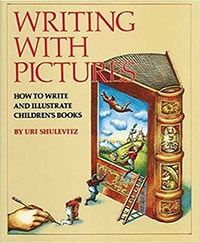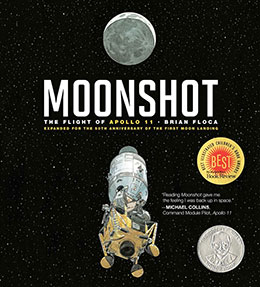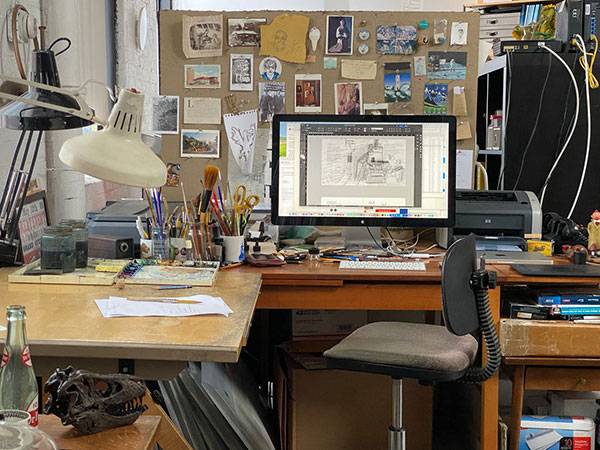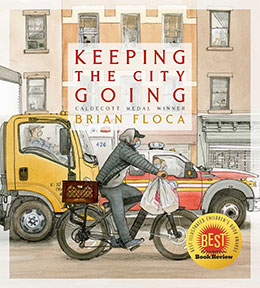From Avi: As I did last summer, I’ve invited 13 admired middle grade authors to write for my blog for the next three months. I hope you’ll tune in each Tuesday to see who has answered these three questions. You should have a list of terrific books to read and share and read aloud by the end of the summer … along with new authors to follow!
Your favorite book on writing:
 My favorite book on writing, as my studio mates may have heard too often, is Uri Shulevitz’s Writing with Pictures. It’s addressed particularly toward writers and illustrators of picture books. Shulevitz is astute on questions of story and form — on action vs. story, on how a reader relates to a character, on progression, on pacing, on the interdependence of image and text, and on endings. (“A good ending should add focus and significance to the unfolding that has preceded it.”) His writing is clear, direct, at times a touch hard-nosed. The point of writing is not to try to make yourself happy. (“When working on your first book, you may ask: Am I happy with the book? Am I happy with the illustrations? These seemingly innocent questions actually shift the importance from the book and the illustrations to yourself. A happy book will inevitably make a happy author. Therefore ask: Is the book happy? Are the illustrations happy?”) The point is not even, or at least not always, to imagine how you might make your reader happy. (“Sentimentality, unfortunately, is no help; in fact it is a hindrance. Sentimentality does not replace the craft that is essential in making good children’s books. Your first obligation is to the book, not the audience.”) The task is to understand and honor the story you are trying to tell. Only then, maybe, will you have a shot at pleasing both yourself and your reader.
My favorite book on writing, as my studio mates may have heard too often, is Uri Shulevitz’s Writing with Pictures. It’s addressed particularly toward writers and illustrators of picture books. Shulevitz is astute on questions of story and form — on action vs. story, on how a reader relates to a character, on progression, on pacing, on the interdependence of image and text, and on endings. (“A good ending should add focus and significance to the unfolding that has preceded it.”) His writing is clear, direct, at times a touch hard-nosed. The point of writing is not to try to make yourself happy. (“When working on your first book, you may ask: Am I happy with the book? Am I happy with the illustrations? These seemingly innocent questions actually shift the importance from the book and the illustrations to yourself. A happy book will inevitably make a happy author. Therefore ask: Is the book happy? Are the illustrations happy?”) The point is not even, or at least not always, to imagine how you might make your reader happy. (“Sentimentality, unfortunately, is no help; in fact it is a hindrance. Sentimentality does not replace the craft that is essential in making good children’s books. Your first obligation is to the book, not the audience.”) The task is to understand and honor the story you are trying to tell. Only then, maybe, will you have a shot at pleasing both yourself and your reader.
Reading aloud from my books:
I read my picture books aloud regularly as I write them, again and again, revising as I go, hoping to find the words and rhythm that work best for story and reader. Which of my books I would recommend most changes depending on my mood, but today I will say Moonshot: The Flight of Apollo 11.
Where do you write most often?
Most writing starts on whatever scrap of paper I have at hand, as an idea or phrase enters my head. It may then move to a writing pad on the table in my apartment or, in an effort to separate myself from the distractions of home, to a quiet coffee shop. When I’m ready to start breaking the text down page by page I enter it into a layout program, InDesign, on my computer, so I can start to see and experience the story somewhat as it will appear in book form. Much revising ensues. Most of that happens in the studio I share in the Gowanus neighborhood of Brooklyn with five other picture book authors and illustrators, Sophie Blackall, Johnny Marciano, Doug Salati, Dasha Tolstikova, and Rowboat Watkins, each of whom will probably be asked to lend an eye at one point or another. After a lot of reworking, that layout will get printed and carted back to the apartment or coffee shop for revision and marking up, and then the whole thing repeats. I’m not a quick writer.
Particulars
About Brian’s recent book, Publishers Weekly said in a starred review, “With his signature affection for architecture and keen sense of urban space, Caldecott Medalist Floca pays tribute to the frontline workers helping to make New York City run during the pandemic. Floca brings precision and expert draftsmanship to renderings of working vehicles, centering the heroes working to get supplies out and save lives, and to the equipment that helps them do it.”



